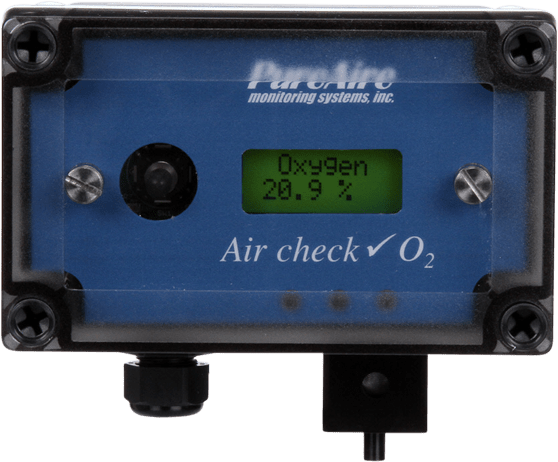Universities

Compressed gases — most commonly nitrogen, argon, and helium — are widely used across college and university labs. Students may use nitrogen gas in science labs, for example to test cultures. In the campus dining hall or a culinary arts program, nitrogen gas may be used to flash freeze substances. Over in the sports complex, athletes who are injured may be directed into cryotherapy chambers where hyper-chilled air reduces inflammation and promotes healing. In each of these situations, the university must address the health risks posed by a nitrogen gas leak.
While these gases are safe when properly stored, improper handling or usage can cause a fatality. Such gases pose a particular risk at universities, where students, EH&S, maintenance workers, and other personnel may come into contact with these substances.
It’s important that university labs make the risks posed by these gases clear by posting signs and monitoring for leaks, both where these gases are used and in gas storage areas. If a cylinder of gas is improperly stored or a tank becomes damaged in transit, gas can leak out. Cylinders are pressurized, so improperly handling a cylinder can cause it to dent, which makes it more vulnerable to explosion. A worker who bangs a nitrogen dewar when carrying it down the stairs could rupture the storage container, leading to a potentially fatal explosion or creating a hazardous leak.
Since gases are used across departments, a range of individuals, from employees to students to maintenance workers, may come into contact with these gases, sometimes without realizing what they’re handling. One slip-up could have devastating consequences for campus safety. There have been instances of gas spills and leaks on college campuses when gas cylinders were not properly stored or were modified using unsafe materials. Since university officials cannot monitor every gas cylinder and supply line, they need a failsafe way to detect gas leaks before the unthinkable happens.
Nitrogen gas has no color and no odor. Leaks are dangerous for precisely this reason, because no one around would see or smell danger until it was too late. As nitrogen gas leaks out, it pushes out oxygen and creates air that’s deficient in oxygen. Breathing oxygen deficient air, even for a couple of minutes, leads to dizziness, confusion, breathing problems, and death. OSHA mandates that universities take actions to protect their workers from onsite hazards, such as gas leaks.
Where nitrogen gas is used or stored, OSHA mandates that universities post notices warning of health risks and monitor oxygen levels to provide an alarm if a gas leak depletes oxygen from the facility. Wall-mounted oxygen monitors offer a simple yet reliable way for universities to monitor and detect gas leaks before employees are injured or killed.
University labs should invest in oxygen monitors wherever inert gases and compressed gases — most commonly nitrogen, argon, and helium — are stored or used. These monitors continually check the levels of oxygen in the air, to alert individuals to a gas leak through a loud alarm and flashing lights. PureAire’s oxygen monitoring offers two alarm levels: 18 percent and 19.5 percent. They work in confined spaces, freezers, basements, laboratories, offering flexible yet reliable services.
Unlike other styles of O2 monitor, PureAire’s oxygen monitor does not require maintenance or calibration. It’s easy to set it up and forget it’s there, although workers or professors can always check oxygen levels on the monitor’s digital display. PureAire’s oxygen sensors are zirconium based technology, which outlasts and outperforms other materials. Every monitor comes with a three year warranty and is built to last for 10 or more years, which means PureAire’s products are a reliable, low-cost, and an efficient solution to avoiding gas leaks in a university environment. Browse O2 monitors today.


